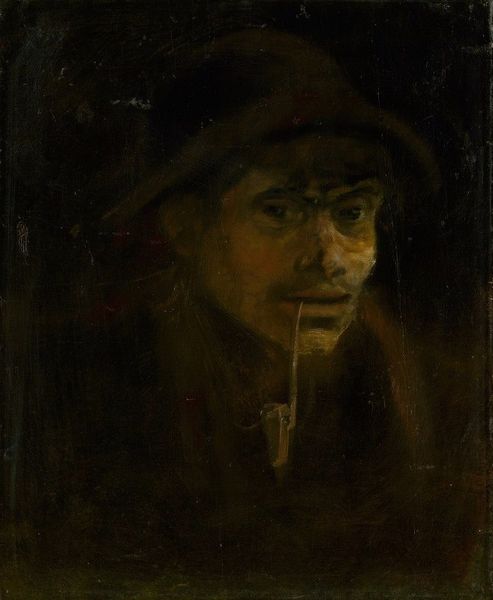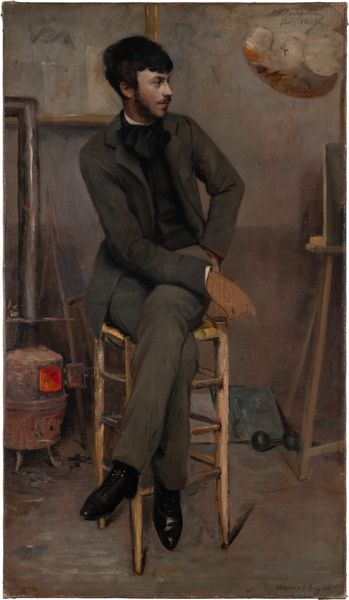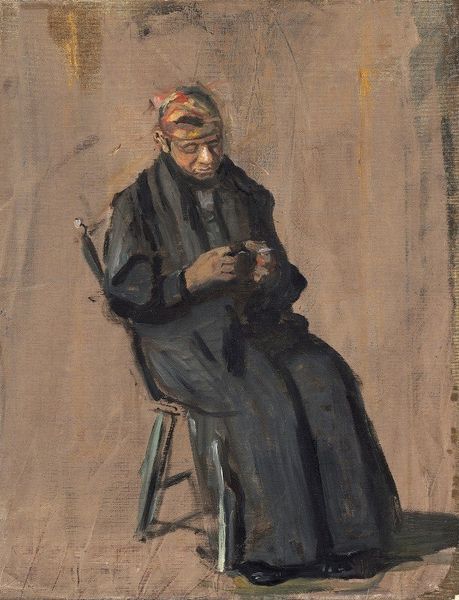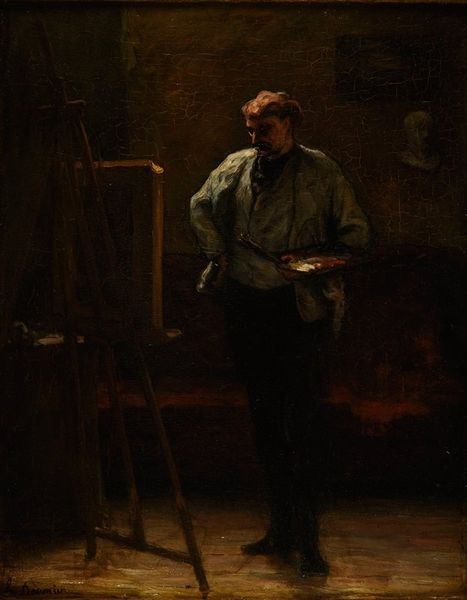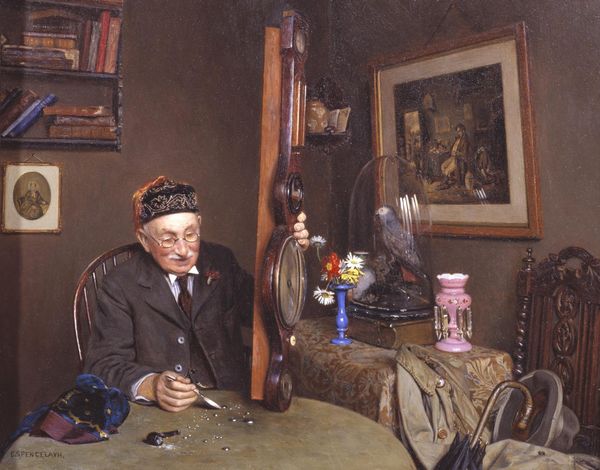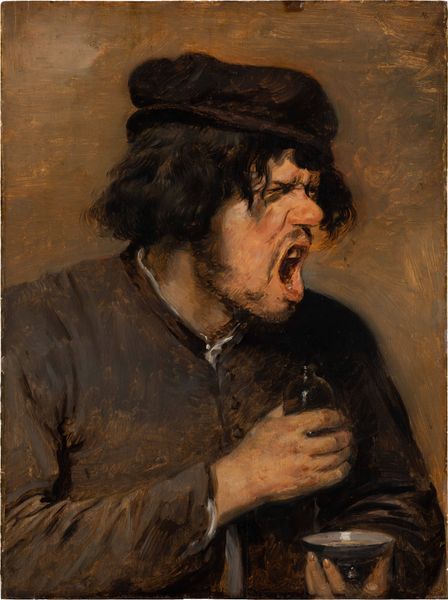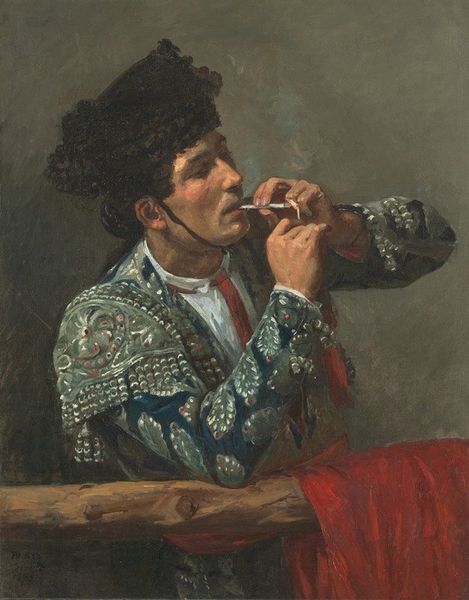
painting, oil-paint
#
portrait
#
painting
#
oil-paint
#
oil painting
#
genre-painting
#
realism
Copyright: Public domain
Curator: What do you see when you look at Aleksander Gierymski’s painting "Priest Drinking Wine," created in 1880? I find it so intimate. Editor: Immediately, I'm struck by the sitter’s mirth, and this really fascinating contrast of shadows on his face. His hat is quite large and casting that wonderful, but also dark shade. It's like looking at someone basking in a secretive joy. Curator: The painting encapsulates, I think, the rising tide of social realism in late 19th-century art. Gierymski was drawn to capturing the everyday lives, the sort of 'ordinary' folk, a radical turn from idealized depictions. It offers an interesting counter narrative. Editor: Absolutely. He’s definitely not hiding the imperfections. The redness of the subject’s nose. What I am finding so alluring is the ambiguity. The work doesn’t sermonize. He's in his private moment, seemingly content in that tiny rebellion with a glass of wine and a smoke. It humanizes. Curator: It certainly does. This work departs significantly from Gierymski's later explorations with Impressionism and open-air painting. In this piece, you see him grounded more in genre painting traditions. He's also inviting a viewer to consider class dynamics. Editor: I can almost hear the clink of the glass, the background chatter of… is that trellis work in the background? Curator: Indeed. Gierymski pays an enormous amount of attention to material culture; it's a very considered tableau. The way the light plays with a diamond patterned background suggests so many possibilities. I can also understand the historical significance too, not only an image, but also what it stood for during a certain era. It encourages an empathic gaze at everyday joys in unconventional subjects. Editor: It feels like a stolen glance. Very personal, in all the shades of human experience. You find yourself wanting to know more. To toast the unexpected pleasure of it all. Curator: Yes, perhaps. It’s that ability to make us consider another person’s lived experience that renders this painting so poignant, more than just an image from a century ago. Editor: A slice of life preserved, potent still.
Comments
No comments
Be the first to comment and join the conversation on the ultimate creative platform.
